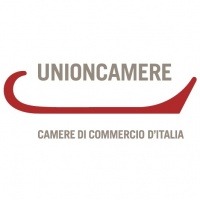
Unioncamere
Unioncamere - the Union of Italian Chambers of Commerce, Industry, Handicraft and Agriculture - is the public association that institutionally collects and represents the Italian chamber system. www.unioncamere.it
Italian handcrafts: The Knives of Frosolone
Frosolone was already a renowned centre of excellence for the production of cutting implements during the time of the Kingdom of Naples. The centre developed when Charles of Bourbon, King of the Two Sicilies, decided to establish an industrial basis in his kingdom, promoting the reorganisation of foundries and armaments. Forced to convert their pro...
Italian handcrafts: Nativity Scene Craft
Naples has always been a place of strong contrasts, so it is only natural that nativity scenes, the extraordinary “product” of the local artisan production, would become embroiled in this and become the basis on which all these contradictions miraculously converge and are formed. The Neapolitan tradition of nativity scenes can be traced back to the...
Italian handcrafts: Artistic engraving on Iron of Val Trompia
The production and decoration of weapons has ancient origins in the Brescia area. As early as 400 BC, the Celtic inhabitants of Val Trompia manufactured weapons, with which they did battle against other populations, including the Raeti and the Cenomani. Following their alliance with Rome, they supplied the empire with many of the swords used in the...
Italian handcrafts: Tuscan tanning
Tanning was one of the earliest human activities. The first evidence of leather being used for clothes, sandals or the creation of objects such as water containers and boats comes from the writings of the Sumerians. The art of tanning was present in antiquity amongst cultures such as the Babylonians, Hittites, Persians, Egyptians, Jews, Shiites, Gr...
Italian handcrafts: Sicilian Puppets
The Sicilian Puppet Theatre (Opra) is a characteristic theatre performance where the puppets, animated by “puppeteers”, represent the exploits of the greatest medieval heroes who fought for Christendom against the Saracens. In particular, the most recurrent theme in the Opra was the clash between the paladins of Charlemagne and the Muslim warriors...
Italian handcrafts: The Majolica of Castelli
Until a few decades ago, only a few examples of sixteenth-century Castelli majolica were known to have survived, mainly attributed to the Pompeii family, whose best well-known ceramic artist was Orazio (ca. 1507-1588/9). His house is also well-known, due to the inscription on the lintel of a window: “Haec domus east Oratii figuli 1562” (“This is th...
Italian handcrafts: Monregalese Ceramics
Starting from the nineteenth century, a ceramics culture develops in the Cuneo province of Monregalese. The manufacturers of silk and woollen cloth for military use govern the area’s vibrant economy and trade with neighbouring towns and Liguria. On finding the production of “fine earthenware” to be an important growth area, the Jacobin doctor Franc...
Italian handcrafts: The woodwork of Trentino
For centuries, wood was the raw material that every mountain community relied on to meet the needs of everyday life. In its most traditional forms, woodworking is the most direct response that people were able to find for their everyday needs. Over time, this immediacy has given way to a tradition, which in the province of Trento has combined funct...
Italian handcrafts: Florentine Crystal
Since the Renaissance glass production of drinking glasses was very active in Florence. There were many glass shops that included a number of different styles made specifically according to the use, for example “glasses for the sick”. From the 16th century, to enrich their prestigious collections, the Medici Grand Dukes brought in Venetian masters,...
Italian handcrafts: Papier-mâché in Lecce
The art of papier-mâché in Lecce, a phenomenon unique to Apulia, dates back to a period between the seventeenth and eighteenth centuries, when the development of arts was linked to the increasing number of churches and monuments. At this time, the craftsmen of Lecce discovered that the art of “plasticising” paper allowed them to create myriad sacr...
Italian handcrafts: Perugia Knitwear
In the 12th century, tapestries and tablecloths were woven in the Umbria area using the French “bird’s eye” motif technique. These embroideries were created primarily on fabrics, often for use in a liturgical setting, and featured geometric shapes or stylized animals and people. Over the following centuries, tablecloths from Perugia were used throu...
Italian handcrafts: Gorizia Jewellers
In the area that is today Friuli Venezia-Giulia, since ancient times, various populations such as the Euganeans and Venetians have contributed to the development of metal crafts and metal processing. Jewellery making is the barbarian art par excellence. The filigree and silver and gold plating decorate a nomad body like a welcoming space. Shi'ite a...














